To determine a huskys age, look at their teeth, eyes, and overall energy level.
| Teeth Condition | Young huskies have pearly white teeth; as they age, yellowing, wear, and tartar buildup occurs. |
|---|---|
| Eye Clarity | Clear, bright eyes typically indicate a younger dog, while cloudiness may suggest an older husky. |
| Coat Condition | A huskys coat may become thinner and less lustrous with age. |
| Activity Level | Puppies and younger huskies tend to be very active, while older dogs may slow down and have less endurance. |
| Hearing and Sight | As huskies age, they may start to experience hearing loss and deteriorating vision. |
| Behavioral Changes | Older huskies may display changes in behavior, such as increased anxiety or irritability. |
| Health Issues | Signs of joint pain or other health problems can indicate advancing age in a husky. |
| Dental Development | Puppies have 28 deciduous teeth, while adults have 42 permanent teeth by about six months of age. |
How to tell how old a husky is
One way to tell how old a husky is, is by examining their teeth. A dental timeline can provide essential clues to estimate a husky’s age, starting from their puppy stages through to full maturity.
Just like humans, huskies go through distinct dental milestones as they age, with their teeth and gums undergoing noticeable changes. By carefully inspecting the development and condition of their teeth, you can gauge the approximate age of your husky and tailor their care accordingly.
To delve deeper into the fascinating traits of these captivating canines and explore the genetics of their striking gaze, we invite you to uncover whether blue eyes are a possible feature in their close relatives. Learn the intriguing reality behind the eye color of Malamutes in our detailed article, Unveil the Mystery: Do Malamutes Possess Blue Eyes?.
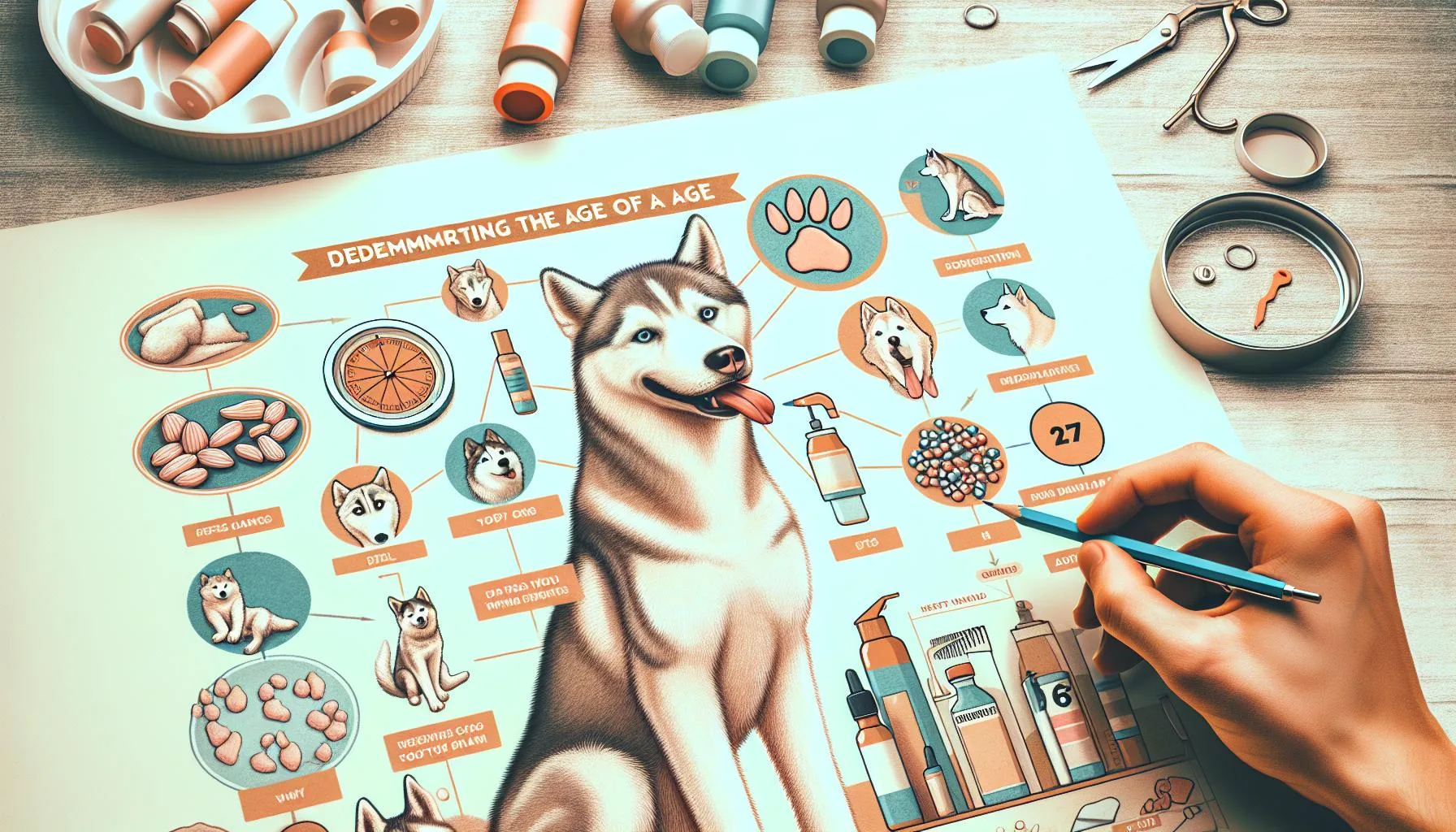
The Eyes Tell a Story
The eyes of a husky can provide valuable insight into their age. As huskies age, you may notice changes in the color and clarity of their eyes.
In younger huskies, the eyes are typically bright and clear, with a vibrant coloration. However, as they mature, you may observe a gradual shift in eye color and clarity.
The once bright eyes may develop a cloudy appearance, and the color intensity may diminish with age. These age-related changes in a husky’s eyes can be indicators of their advancing years, allowing you to assess their age with a keen eye for these subtle shifts.
How to tell how old a husky is
Additionally, keep an eye out for the development of age-related eye conditions, such as cataracts or glaucoma, which can further hint at your husky’s age.
These conditions often manifest with age and can affect the clarity and overall health of the eyes. Regular eye examinations by a veterinary professional can help identify and address these issues, providing further clues to determine your husky’s age based on the changes in their eyes over time.
While understanding your husky's eye health is crucial, ensuring their overall well-being is just as important. To gain insight into best feeding practices and the potential hazards of certain treats, discover safe feeding tips through our comprehensive guide on "The Dangers of Chicken Bones for Dogs."
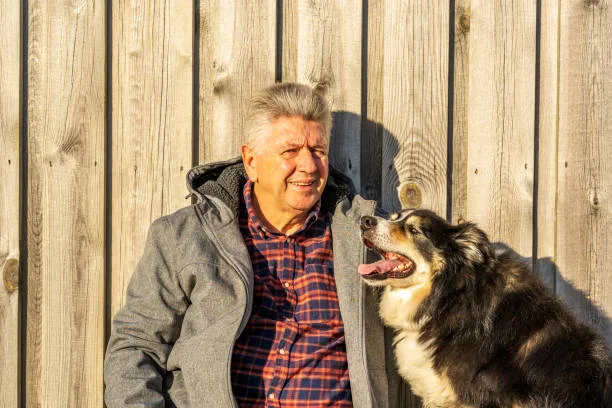
Assessing Coat Condition
To assess the age of a husky, one can closely examine the condition of its coat. The texture, thickness, and color of the coat provide valuable clues about the husky’s age.
In younger huskies, the coat tends to be softer and smoother, with a thick, plush feel. As the husky matures, the texture may become coarser and less dense, with a slight decrease in the overall fluffiness.
Additionally, changes in color, such as the emergence of gray hairs or a fading of the coat’s vibrancy, can indicate the aging process. Monitoring the coat condition is an essential part of understanding the husky’s age, allowing for appropriate adjustments in their care and grooming routines.
How to tell how old a husky is
Observing the texture, thickness, and color of the husky’s coat can provide valuable insights into their age and help in tailoring their care accordingly.
Gauging the changes in your husky's coat can provide valuable insights into their aging process. For a deep dive into maintaining your husky's health and ensuring their comfort, explore the insights offered in our detailed article, Understanding Pro Pectalin's Efficacy in Huskies for strategies on swift relief.
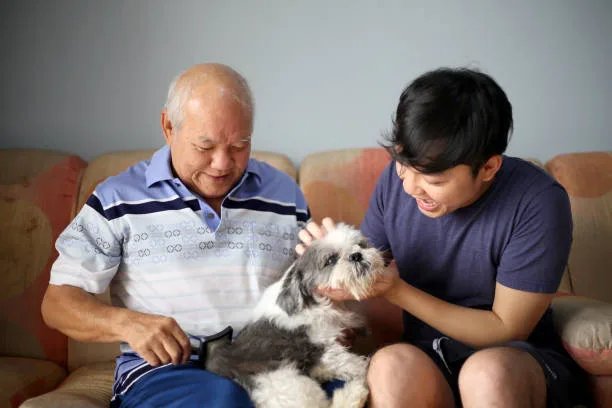
Energy Levels and Behavior Patterns
As a husky owner, it is important to understand how your dog’s energy levels and behavior patterns can provide valuable clues about their age. The vitality and typical behavior habits of a husky can vary significantly throughout their life stages.
Understanding these changes can help you provide the best care for your furry friend. Huskies are known for their boundless energy and playful nature, especially during their puppy and adolescent years. They are typically curious, enthusiastic, and may exhibit high levels of exuberance.
As they transition into adulthood, their energy levels tend to stabilize, and they often develop a more even-keeled demeanor. Adult huskies usually maintain a good balance between being active and calm, displaying a sense of maturity in their behavior. In their senior years, huskies may experience a noticeable decrease in energy levels.
They might prefer more frequent naps and shorter bursts of activity. As they age, you may notice changes in their behavior, such as decreased interest in intense physical activities and a preference for leisurely walks.
Understanding and adapting to these changes can significantly impact their overall well-being and happiness. Observing your husky’s energy levels and behavior patterns is a valuable way to gauge their stage in life, allowing you to tailor their care and activities accordingly. By recognizing these shifts, you can ensure that your husky receives the appropriate exercise, mental stimulation, and rest at every life stage..
To ensure your husky maintains its vibrant energy throughout different life stages, proper health care is crucial, especially during pregnancy. Delve into our comprehensive guide, Safeguarding Your Future Pups: Effective Flea Treatments for Expectant Huskies, to protect your pregnant furry friend from flea infestations.
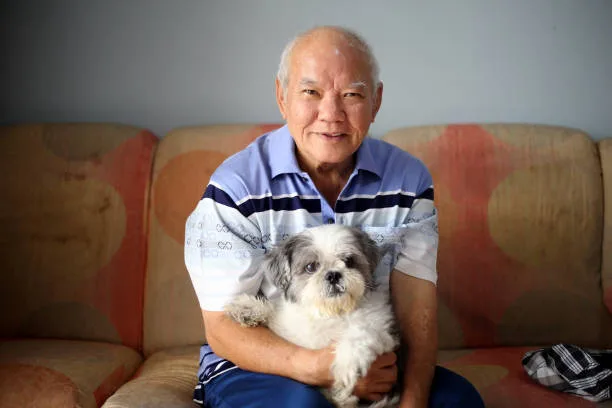
Analyzing the Gait & Mobility
As huskies age, there are distinct changes in their gait and mobility that can serve as indicators of their advancing years. Observing a husky’s movement and flexibility is a key aspect in assessing their age.
In their younger years, husky puppies are typically agile, with energetic and sometimes clumsy movements. As they mature into adulthood, their gait becomes more coordinated and smooth, reflecting their physical development.
However, as they enter their senior years, you may notice a gradual decline in their mobility and flexibility. Older huskies may exhibit stiffness, reduced range of motion, and a slower pace when walking or running.
These changes can be subtle at first but become more pronounced as they age, and being attentive to these cues can provide valuable insights into their stage in life.
Understanding the shifts in a husky’s gait and mobility offers valuable information for tailoring their care in accordance with their age-related needs. It allows for adjustments in their exercise routines, potentially incorporating more gentle activities to accommodate any mobility challenges.
Additionally, being aware of these changes can prompt proactive measures to support their joint health, such as choosing appropriate supplements or arranging comfortable living spaces that minimize the impact on their movement.
For a deeper dive into the world of these captivating canines, including their unique characteristics and how to care for them, consider exploring our comprehensive guide. Unravel the mysteries surrounding canine eye colors and discover essential husky care tips by visiting Can Dogs Have Green Eyes? Discover Fascinating Facts and Essential Husky Care Strategies.

Listening to the Bark
As huskies age, their vocalizations can undergo noticeable changes, giving valuable clues about their age. The pitch, tone, and frequency of a husky’s bark may evolve over time, reflecting the natural aging process.
In the early stages of life, a husky’s bark is typically high-pitched and energetic, denoting youthfulness and vitality. As they advance in age, the bark may become deeper and more subdued, reflecting a shift in their physical and emotional well-being.
By listening closely to the nuances in their bark, owners can gain insights into their husky’s age and adjust their care requirements accordingly.
Understanding the gradual changes in a husky’s vocalization is an essential part of caring for an aging husky. Keep in mind that variations in the bark may not only signify physical aging but also behavioral and emotional adjustments.
It’s crucial for husky owners to be attentive to these auditory cues, as they can be valuable indicators of their pet’s evolving needs. Being attuned to the changes in vocalization allows owners to provide the appropriate support and adapt their care to ensure an optimal quality of life for their aging husky.
To delve deeper into the care nuances of these charismatic companions as they age, explore our comprehensive guide on nurturing a mature miniature husky. Discover the full spectrum of their needs and how to keep them content in their golden years by visiting the Full-Grown Miniature Husky Care Guide.
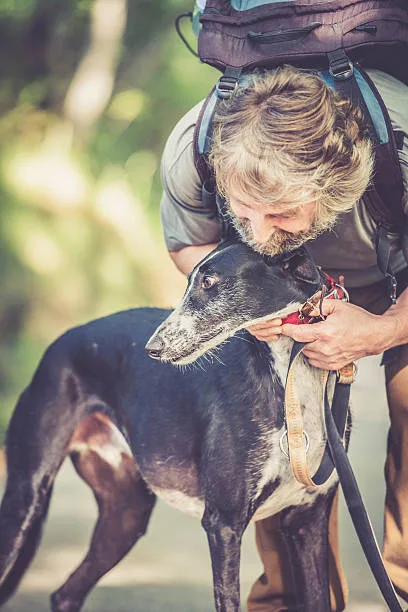
Health History & Veterinary Records
When it comes to determining the age of your husky, examining their health history and veterinary records can provide valuable insights. By reviewing past medical records and health issues, you can piece together a timeline of your husky’s health and potential age-related changes.
Veterinary professionals often document the age of a dog at the time of medical treatments, surgeries, or vaccinations, which can serve as vital clues in estimating your husky’s age.
American Kennel Club: How to tell how old a husky is
Furthermore, health problems that arise as dogs age, such as arthritis or dental issues, can leave a trail in their medical records. These conditions can be indicative of a husky entering their senior years, helping you gauge their approximate age and adjust their care regimen accordingly.
Regular veterinary check-ups and medical history reviews are essential elements in assessing and managing the aging process of your husky.
To delve deeper into the nuances of your Husky's care regimen, particularly during their early developmental stages, explore our comprehensive guide on the timely and proper grooming of their delicate nails. Discover essential tips and best practices in our article, "Guide to Your Husky's Early Care Needs," to ensure your puppy's health and happiness. Guide to Your Husky's Early Care Needs.
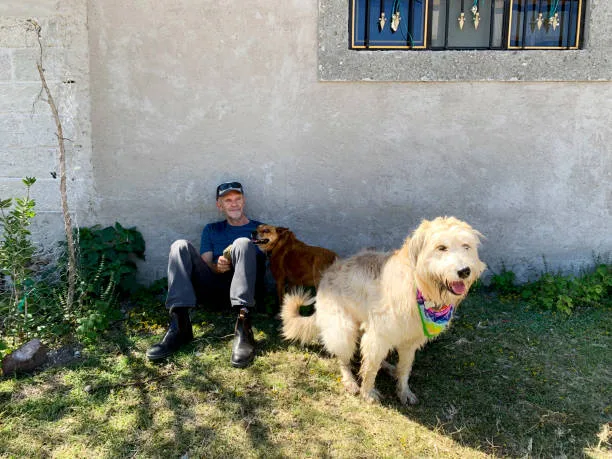
Interactive Methods: Dog Age Calculators and DNA Tests
On Quora about: How to tell how old a husky is
When it comes to interactive methods for determining a husky’s age, dog age calculators and DNA tests have become increasingly popular tools. Dog age calculators, which are widely available online, consider various factors such as breed, size, and behavior to estimate a dog’s age in human years.
While these calculators can provide a rough estimate, they should be used cautiously as they may not account for individual variations. On the other hand, DNA testing offers a more scientific approach to determine a husky’s age by analyzing genetic markers associated with different life stages.
This method can provide a more accurate estimation of the husky’s age, especially when their history is unknown.
For pet owners curious about tailored care approaches for unique Husky breeds, we invite you to explore our comprehensive guide. Uncover invaluable insights on nurturing a smaller-sized Husky by visiting Nurturing Your Miniature Husky Companion.
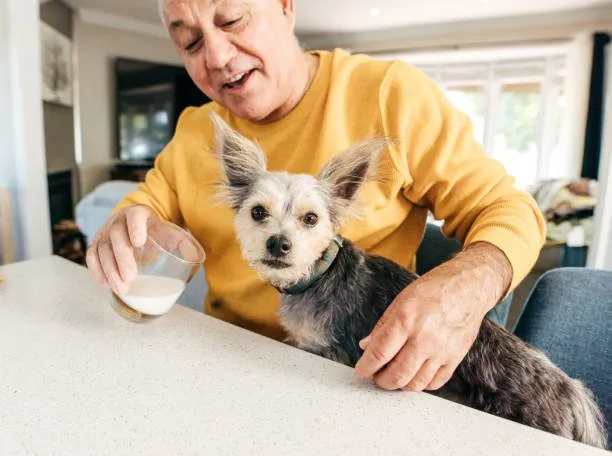
Why Accurate Age Estimation Matters
Accurately estimating your husky’s age is crucial for tailoring their care to their specific life stage. Knowing your husky’s precise age is essential for providing the right dietary, healthcare, and exercise needs.
Understanding their age helps in determining the appropriate type and quantity of food to maintain their optimal health. It also allows for tailored healthcare, such as knowing when to start regular health screenings and vaccinations, as well as identifying potential age-related health concerns.
Moreover, knowing your husky’s age enables you to adjust their exercise routine, ensuring that it’s suitable for their energy levels and physical capabilities at their particular stage in life. These factors combined contribute to your husky’s overall well-being and longevity, making accurate age estimation a fundamental aspect of responsible husky care.
Reddit How to tell how old a husky is
By accurately estimating your husky’s age, you can ensure that they receive the necessary care and support tailored to their specific life stage, promoting their overall health and well-being.
Understanding your husky's age is vital for optimizing their well-being, but it's also important to consider other aspects of their health, such as bladder control. Discover essential insights on canine urinary health by exploring our detailed article on the duration dogs can comfortably hold their bladder.
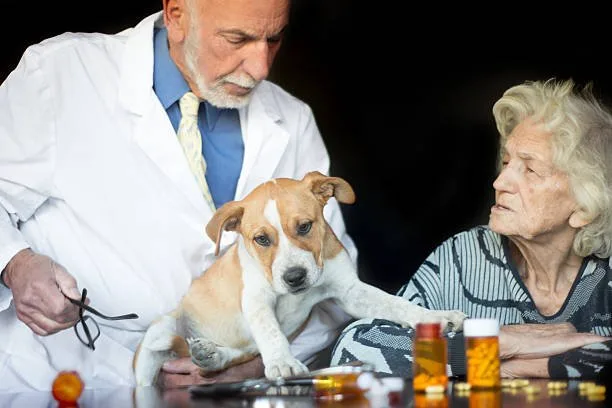
Maturing Huskies: Adolescent to Adult Transition
As a husky moves from adolescence into adulthood, several changes occur that reflect their maturation. How to tell how old a husky is can be determined by examining the refinement in dental health.
As a husky matures, their adult teeth fully develop, replacing the puppy teeth. By around six months of age, most huskies have all of their adult teeth.
Additionally, alterations in behavior can provide clues about a husky’s transition to adulthood. Adolescent huskies may display more erratic and energetic behavior, while adult huskies tend to be more settled and balanced.
The stabilization of activity levels is another indicator of a husky’s transition to adulthood. Younger huskies may exhibit bursts of high energy, whereas adult huskies have a more consistent and moderate activity level.
To ensure huskies thrive during this critical growth phase, it’s essential to adjust their care accordingly, offering appropriate dental attention, guidance on managing behavioral changes, and engaging in activities that support their maturation.
As you navigate the pivotal transition of your Husky into adulthood, understanding their evolving needs is vital for their overall well-being. Delve deeper into essential pet health tips, including advice on hydration options such as Gatorade for dogs, by exploring our detailed guide on Canine Hydration and Health Strategies.
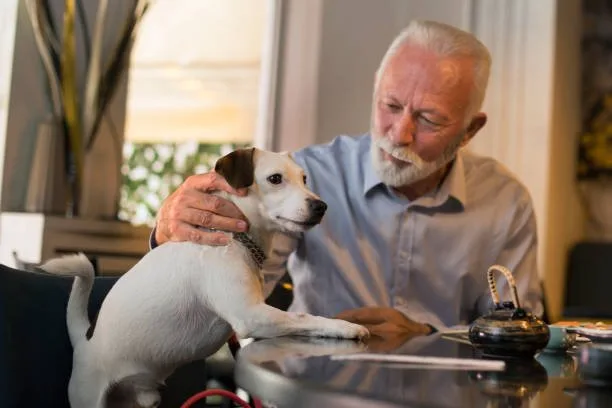
Geriatric Husky Wellness: Embracing Senior Years
As Huskies enter their senior years, it becomes crucial to understand the signs of aging to provide them with the specialized care they need. One way to tell how old a husky is by observing the signs of aging, such as joint health deterioration, decreased eye clarity, and changes in coat condition.
Identifying these signs can help in tailoring a specific care plan for their senior years. Preventative care, including regular check-ups, maintaining a healthy weight, and dental hygiene, plays a crucial role in enhancing the well-being of aging Huskies.
Appropriate exercise tailored to their physical capabilities is essential for maintaining muscle tone, joint mobility, and mental stimulation. Dietary adjustments, such as providing senior-formula dog food to accommodate their changing nutritional needs, are also vital to support their overall health and longevity.
Additionally, it is important to create a comfortable living environment for senior Huskies, which may include orthopedic bedding to support their aging joints and ensuring easy access to food, water, and a cozy resting area.
Regular grooming, including brushing to stimulate circulation and maintaining coat health, is essential. Moreover, proactive measures, like installing ramps to assist with mobility, also contribute to the overall well-being of aging Huskies.
While addressing the needs of senior Huskies ensures their comfort during their golden years, understanding the journey from puppyhood is equally important. Discover the wonders of Husky puppies and their early development stages by visiting Planet Husky for comprehensive insights into these adorable young companions.

Health Management: Husky Care from Puppy to Senior
Monitoring your husky’s weight is an essential part of their healthcare from their early years to their senior phase. Regular weigh-ins can help to track their growth and ensure they are maintaining a healthy weight.
As your husky transitions through different life stages, it’s crucial to conduct regular health screenings. These screenings can aid in detecting any potential health issues early on, allowing for prompt intervention.
- Keep up with a vaccination schedule tailored to your husky’s age and lifestyle to ensure they are adequately protected from preventable diseases.
Vaccinations play a vital role in safeguarding your husky’s health across all life stages, from puppyhood to their senior years.
- Adapting nutritional needs is pivotal as your husky ages. From the high-energy demands of their puppy years to the lower activity levels in their senior phase, adjusting their diet to meet their changing needs is crucial in promoting their overall well-being.
Ensuring your husky’s health management is comprehensive, covering their specific needs at every life stage, is key to providing them with a healthy and fulfilling life.
Regular veterinary checkups, balanced nutrition, and preventive care form the foundation of holistic health management for your husky, from their playful puppy days to their golden senior years.

Supportive Strategies for an Aging Husky
As your husky ages, it’s crucial to adopt supportive strategies to ensure their well-being. Specialized grooming routines play a vital role in an aging husky’s care.
Brush your husky’s coat regularly to prevent matting and tangles which become more common as they age. It also allows you to check for any irregularities such as lumps or skin conditions.
Additionally, regular veterinary checkups are essential for identifying and addressing age-related health issues early on. Schedule bi-annual visits to monitor your husky’s overall health, dental condition, and to discuss any concerns about their behavior or energy levels.
It’s equally important to implement age-appropriate exercise regimens. While your aging husky may not be as agile as before, tailored exercises such as short walks and gentle play sessions will help maintain their mobility and joint health.
Furthermore, providing mental stimulation through interactive toys and games can contribute to their overall well-being, making their senior years comfortable and enjoyable. Always remember to consult your vet to tailor these strategies according to your husky’s individual needs.
Supporting an aging Husky:
- Specialized grooming routines
- Regular veterinary checkups
- Age-appropriate exercise regimens
.

Conclusion: Holistic Approach to Aging
To ensure the well-being of your husky at every stage of their life, it is essential to adopt a holistic approach to aging. By incorporating the various methods for determining the age of your husky, such as examining their teeth, assessing coat condition, observing behavior patterns, and utilizing technological tools like dog age calculators and DNA tests, you can gain a comprehensive understanding of their life stage.
Once you have this information, it is crucial to integrate these findings into a comprehensive care plan that encompasses their dietary, healthcare, and exercise needs. By tailoring their care plan to their specific life stage, you can ensure that your husky thrives and remains healthy and happy throughout the years..
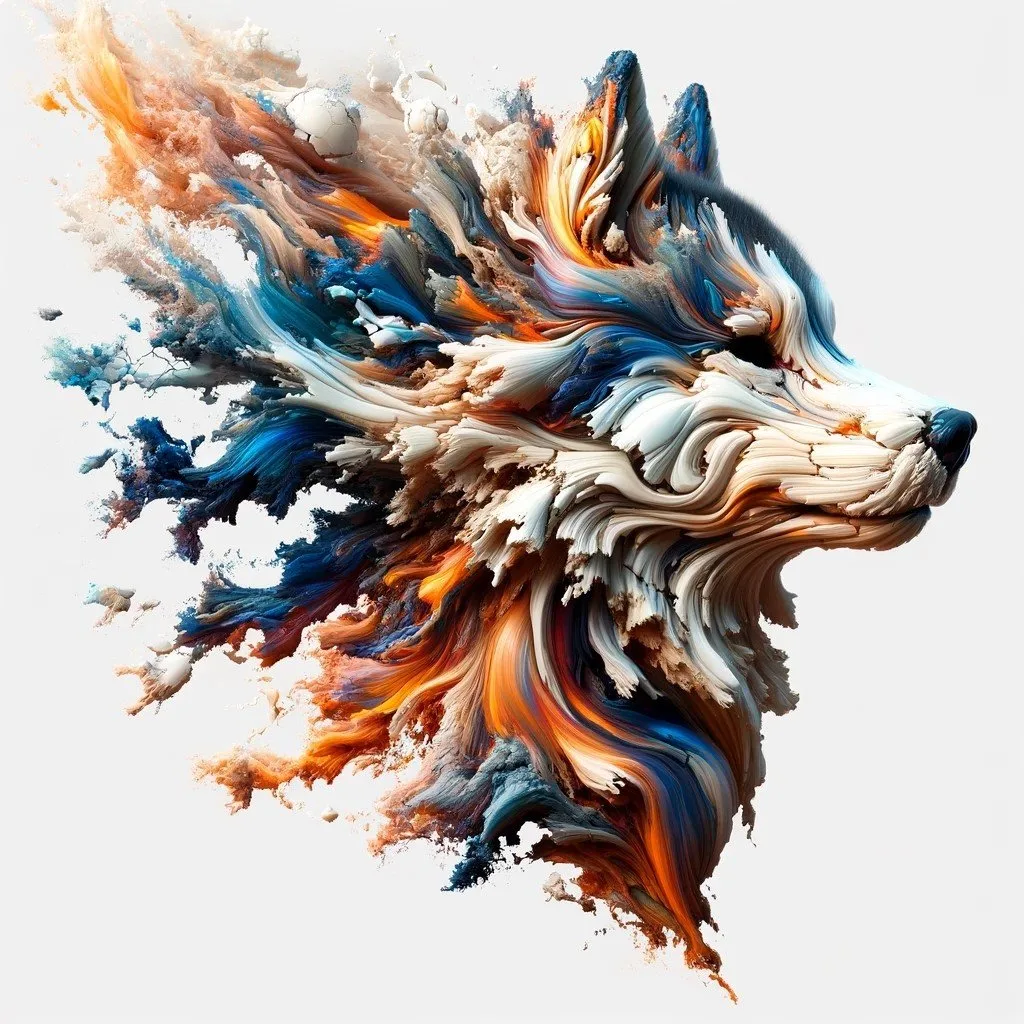
Leave a Reply